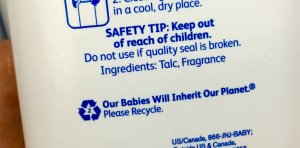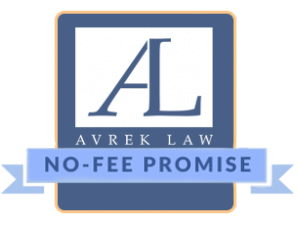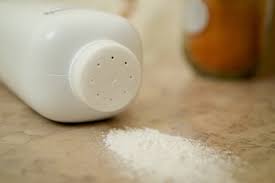Talcum Powder and The Risks
Talcum powder is one of the most well-known and controversial personal care products.
It is widely used in babies, however it can penetrate the body -especially of females- and this can be problematic which is why talcum powder lawsuits are occurring.
Despite all of its benefits, talcum powder is questioned, especially when used with toddlers, since one of the biggest drawbacks is its easy inhalation and this is bad for health in general terms.
It causes damage to the lungs of both toddlers and adults.
Ovarian Cancer is now being linked to talcum powder so contact Avrek Law for help.
Avrek Law Is Here To Help
Avrek Law has over 50 years experience fighting for our clients and we’ve recovered over $250 Million.
Being diagnosed with ovarian cancer is obviously a life changing event.
Don’t fight the insurance companies alone, let Avrek Law help
You can contact our lawyers 24 hours a day online or call us at 866-598-5548
If you have questions about a talcum powder lawsuit (or baby powder) please don’t wait, just call us today.
Is Talcum Powder Safe to Use?
Talc based powder is a very fine substance and chemically similar to asbestos. Some talcs contain phthalates, a highly controversial ingredient considered carcinogenic.
It is believed that tiny talc particles can travel through the genital tract and cause chronic inflammation, allowing cancer cells to develop in the ovaries.
It is also known that the particles can last for several years inside the body. It is estimated that a particle of talc inside the lungs would take eight years to dissolve.
Therefore, institutions such as the American Academy of Pediatrics do not recommend its use, unless certain measures of care are exercised.
Although there is currently no research that actually links talcum powder with the onset of cancer, specialists agree that precautionary measures should be taken for those who choose to continue using it.
For these reasons, many lawsuits have involved this substance.

Class Action Lawsuits
When a number of people claim to have suffered injuries as a result of purchasing a defective product, it can be a huge benefit for those victims to join a class action lawsuit.
This is simply the case because it is difficult for any person to file an individual claim against the product manufacturer.
Class action lawsuits are mainly about being efficient for those people with similar claims, by coming together victims can increase their chances of being heard and actually seeing their lawsuit come to fruition.
Since May 2009, the coalition called the Safe Cosmetics Campaign began lobbying Johnson & Johnson to remove several ingredients from its personal care products for babies and adults.
After three years of petitions, negative publicity and a boycott threat, the company agreed to eliminate the 1,4-dioxane and formaldehyde ingredients, both considered probable human carcinogens, from all its products by 2015.
Contact Avrek Law today if you have questions about talcum powder lawsuits and settlements, etc.
Call us at 866-598-5548 for a free consultation 24/7.

Individuals Vs Johnson & Johnson
Johnson & Johnson talcum powder began to be sold more than 100 years ago, shortly after the company was founded.
Among its first products were adhesive patches containing painkillers such as mustard seeds, pepper, quinine and opium.
Clients complained that removing the adhesive made their skin irritated.
Therefore, Johnson & Johnson’s science director sent them small talcum containers to help soothe the irritation. Some began using it to relieve diaper rash.
In 1893 the company introduced baby powder, made up of 99.8 percent talc and 0.2 percent of a blend of aromatic oils.
Fast-forwarding to modern times, Johnson & Johnson was sentenced to pay $ 72 million in February of 2016 for the case of a woman who died of ovarian cancer.
Jackie Fox, from Alabama, died last year, at age 62, after using talcum powder for babies and others for feminine hygiene during decades.

The family argued at the trial that the company knew the risks of the product but did not warn consumers and the jury convicted J & J for “product liability, malpractice and conspiracy,” stated Jere Beasley, one of the family attorneys.
This resulted in a sentence of US $10 million for personal damages and another US $62 million for punitive damages after the death of the patient.
That same year, a St. Louis City jury ordered the company to pay $55 million to a woman who reported having contracted ovarian cancer after using talcum powder from J & J for intimate hygiene.
Gloria Ristesund, 62, said she used J & J’s intimate hygiene products on her genitals for decades.
She was diagnosed with ovarian cancer in 2011 and had to undergo several operations.
This is the second judicial defeat that entails a millionaire payment for the company, which faces about 1,200 lawsuits that accuse it of not adequately informing consumers about the risks of their talc products.
The company insisted its products are safe and said it will appeal the ruling.

Individual Lawsuits Different From Class Action Suits?
There are two primary types of individual lawsuits. The first is a case of patrimony, also known as case of chancery.
These demands do not involve money, instead they focus on things like custody or wills; the second type of civil suit is a case or law litigation. Better known as a lawsuit.
The plaintiff seeks financial compensation for damages or losses in a legal dispute.
Civil suits begin when someone files a formal complaint with a court employee, usually for a fee.
Most of the time, before this happens, the parties involved have already tried to fix this problem out of court.
The court then issues a formal summons to let the accused know that the complaint has been filed.
Then the summons asks him to appear in court for a first hearing. The plaintiff or his attorney gives them a copy of the subpoenas, a process known as “surrender.”
The accused then has the opportunity to respond to the subpoenas.
If the accused does not appear at the hearing, in many cases, the judge will assume that he is not answering the claims of the plaintiff and will therefore automatically rule in favor of the plaintiff.

For this reason, it is imperative for both parts involved to assist the audience if they want to defend themselves.
Whoever loses, they will always have the power to appeal, and they can file a counterclaim regardless of the outcome of the case.
A class action suit is a group of people who suffered similar damages for the incompetence of some entity, usually a company or organization, which has the right to file a lawsuit to defend themselves and protect their interests.
This lawsuit is filed before a judicial authority through a collective action, also known as class action.
In this type of case, unlike the individual ones, there are many, hundreds or even thousands of plaintiffs involved.
There is a long history of class action lawsuits in the country that brought about historical changes in the laws.
These lawsuits were filed to deal with damage caused by defective products, environmental problems, labor and racial disputes, deception and economic fraud, etc.
Thousands of people were able to get their civil rights respected, and get compensation for serious injuries and losses they had suffered.
The most common procedure for collective actions is class action.

To file a class action lawsuit in US federal courts, these are some of the things to keep in mind:
- Number of affected: Many people must be willing to take legal action against an accused or defendant group.
- Similarity of cases: the claims of those affected should raise similar interests in fact or law.
- Compatibility: The elected representative must be appropriate and their demands should be similar to that of the other individuals affected in the case.
- Supremacy: class action should be the most appropriate method to resolve the dispute.
This type of legal action can also be done in US state courts, but each state has its own requirements.

Talcum Powder Substitute
A good substitute for talcum powders is cornstarch with baking soda, or mixing cornstarch with starch.
In addition, in all cases, it is less dusty, but you always have to be careful so that toddlers do not inhale any type of dust.
However, there are several creams of good quality and price; check with your pediatrician.
In addition, there are other powders for babies on the market that do not contain talc; again consult your pediatrician.
Talcum Powder Vs Baby Powder
The use of talc is very common to avoid moisture in different areas of the body, but in babies of under one year it can be dangerous because aside from being a volatile substance, talc based powder is very easy to inhale and can cause respiratory problems and lung injury.
Powder-based talcs are the most important to avoid because, unlike cornstarch (maize), they have small particles that can be easily breathed.
The problem is that, when using it close to babies, it is very difficult to prevent it from spreading in the air.
If, for example, you drop the container of talc while it is open, it can cause a cloud of dust, which for grown men and women only means some sneezing, but it can be risky for toddlers.
In the case of diaper dermatitis, it is not proven that the use of talc, cornstarch or starch helps to prevent or treat it.
It can even sometimes be counterproductive if it accumulates in the diaper folds, so it is not worth the risk since you are able to treat it in other ways effectively while not putting the baby in danger.
Johnson and Johnson Nor FDA Warned People of Dangers
To date, there have been successful claims filed against Johnson & Johnson regarding their products, Shower to Shower and Baby Powder.
The company has been dismissed from failing to warn consumers that long-term use of talcum powder and talc-based products may increase the risk of developing ovarian cancer.
Nor has the FDA shown any concern about the dangers of talc.
The closest admission was in 1993 when the Acting Associate Commissioner for Legislative Affairs of the Department of Health and Human Services admitted the following:
“We are aware that there have been reports in the medical literature between the frequent use of talc in the female perineal area for several years and the increased likelihood of developing certain ovarian cancers.”
Then, surprisingly, he said, “the FDA is not considering banning, restricting or requesting a label warning on products containing talc.”

Aware of the extreme damage of talc and alarmed by the government’s continuing lack of response, in 1994 The Cancer Prevention Coalition, supported by the New York Center for Constitutional Rights, made a request to the FDA.
In this request they expressed that talc for genital use should be labeled with an explicit warning of the risks of ovarian cancer. However, the FDA denied this request.
In May of 2008 the Cancer Prevention Coalition filed another petition with the FDA.
This was supported by a number of groups including the Organic Consumers Association, the International Association for Humanitarian Medicine, and Dr. Faye Williams of the National Congress of Black Women.
New scientific evidence was cited about the dangers of talc, and the FDA was asked to force all products containing talc to be labeled with this type of warning: “Frequent application of talc in the genital area substantially increases the risk of ovarian cancer”.
However, Dr. Andrew von Eschenbach then commissioned of the FDA, did not respond to the request.
Are Women Who Use Talcum Powder At Risk?
Women have been persuaded by advertising to sprinkle themselves with talcum powder to cover alleged genital malodors.
It is no surprise that talc has become a symbol of freshness and cleanliness for more than five decades.
The first warning of the dangers of talc in the genital area came in a 1971 report with the identification of talc particles in ovarian cancers, a finding harshly rejected by Dr. G.Y. Hildick-Smith, Medical Director of Johnson & Johnson.
However, a subsequent publication in the prestigious paper The Lancet warned, “The dangerous potentials of talc in the ovary should not be ignored.”
This warning was confirmed in a 1992 publication in Obstetrics & Gynecology, which reported that frequent use of a woman’s talc on her genitals increased her risk of ovarian cancer.
The talc in question was single brand or generic “baby powder”.
After the 1992 report, at least a dozen of other important scientific papers documenting the relationship between talc and ovarian cancer were published in leading medical journals such as Cancer, The Lancet, and Oncology.

The culmination of this anti-talc research came in 2003 when Anticancer Research published a large-scale meta-analysis or review of 16 previous published studies involving 11,933 women; a 33% increase in ovarian cancer risk was confirmed.
It is not surprising that ovarian cancer mortality in women aged 65 years or older has increased significantly, especially in black women who have a higher rate of talc use than other groups of women.
Nearly 16,000 women in the United States die from ovarian cancer each year, which means that it is the fourth most common fatal cancer among women.
Some estimate that 1 in 5 women apply talc regularly to their genitals.
This use occurs either by direct application or by tampons, hygienic towels or diaphragms that have been sprinkled with talc.
Increased recognition of the dangers of talc arose even from the cosmetics industry.
The president of the Cosmetic Toiletry and Fragrance Association, Edward Kavanaugh, admitted in 2002 that talc is toxic and “can reach the ovaries.”
Yet, inexplicably, talc manufacturers do not warn women that talc could be dangerous to their health.
How much is your case worth?
Get a free case evaluation

